The Ultimate Benchmarks of CEOs in Growth-Stage B2B SaaS, DACH
We mapped the full DACH B2B SaaS Chief Executive Officer market and looked into the backgrounds of 210 current and past CEOs.
The last few years have been busier than ever in terms of Founder and CEO replacement searches in SaaS. As SaaS valuations compressed and the funding market turned upside down, it also marked the end of the journey for many founders and CEOs who were either burned out or pushed out by the Board.
We decided to take a closer look at this talent pool in the DACH region, creating the ultimate report on Chief Executive Officer benchmarks for growth-stage B2B SaaS companies.
We aimed to understand who these leaders are, uncovering benchmarks around gender, geographic roots, years of experience, professional background, career path, compensation, and education. Investors, boards, and aspiring executives will find valuable insights here about the talent pool leading DACH’s top SaaS companies.
This report was compiled by The Big Search with the help of Navis. If you're interested in leadership and talent trends, looking to hire an executive leader, or simply want to discuss the findings, feel free to reach out 👉 learco@thebigsearch.com
💡 Why DACH Matters Right Now
The DACH region stands as one of the most vibrant hotspots for B2B SaaS growth, attracting founders, investors, and clients. With VC investment in the region reaching $2.8 billion in Q1 2025, DACH is the second-largest recipient in Europe, just behind the UK.
Similarly, DACH is a popular destination for PE investors. The region ranks as the second most valuable market in Europe by total EV managed by PE firms, with €304B under management. To give you a sense of the region's pulling power, some leading firms like Permira and Advent International allocate over 30% of their European assets to the DACH market.
It's also the top choice for many B2B SaaS companies wishing to expand into Europe, and its robust ecosystem is setting the pace for innovation and growth.
🔎 The 100 B2B SaaS DACH Companies mapped
We analyzed 100 B2B SaaS companies in the DACH region with 200–1,000 FTEs, each backed by at least $10 million in venture capital or by private equity. These companies were either founded and headquartered in the DACH region or were international companies with significant DACH operations (200+ employees). We mapped the full Chief Executive market to provide a representative sample and identified 210 current and past CEOs. In situations where it’s an international company with DACH operations, we selected the President/Managing Director of the DACH region.
We’ve also created the definitive report for Commercial leadership, using the same sample pool. Best way to benchmark :)
🧑💼 CEO Landscape: Key Insights
Of the 100 companies analyzed, 99 currently have an active CEO. Despite thorough research, we couldn't pin down the current CEO for 1 company, which we suspect is going through a transition.
We found a median of 2 (current and past) CEOs per company and a range of 1 to 9.
There's also a clear gender disparity: just 4.8% of the CEOs we mapped are women, notably below the broader tech industry's average of 17%.
It's not surprising to see multiple CEO changes, especially among older companies that have evolved through various phases. Conversely, organizations with just one CEO typically signal a deeply involved founder who has maintained leadership since inception.
💬 How Many CEOs are German Speakers?
We identified CEOs from 23 different nationalities spanning four continents.
68.9% originate from within the DACH region, with Germans accounting for 84.7% of this group.
65.2% of CEOs lead companies matching their own nationality.
Interestingly, these insights align closely with our previous findings on Commercial leadership, where 76.2% had local backgrounds. This suggests a common underlying dilemma: relying heavily on German-speaking talent can be a good strategy during early-stage customer engagement. However, this reliance may later become problematic, potentially restricting the company's expansion and slowing growth in non-German-speaking markets.
📍 Location/Hubs - Where Do They Come From?
84.3% of these CEOs were located in the DACH region at the time they assumed their roles. Among CEOs based outside the DACH region, 60.6% are located in the US.
70% joined from companies already based in DACH.
Berlin and Munich stand out, accounting for 25% of the total CEOs' prior workplaces.
Outside the DACH region, international hubs like London, New York, and San Francisco stand out. Beyond these major tech centers, we also spotted the Netherlands and France.
48.6% have an international background, meaning they’ve worked outside the DACH region at least once in their careers.
When it comes to sourcing CEOs, companies appear to favor talent already embedded within the DACH region. Unlike our previous findings on Commercial leadership, where talent often clusters around a few major hubs, the CEO's previous locations are noticeably more dispersed. In fact, the data suggests a pattern of German-speaker leaders who gained valuable international experience and then returned to the region, often with a strong grasp of the local business culture. This could be a winning formula for companies looking to scale globally while maintaining regional roots.
What about the location of their Product/Tech leaders?
🌱 Founder-CEO vs. Hired CEO
Note: In this research, "hired CEOs" refers to leaders appointed to lead a company, whether recruited externally or from within.
We checked active CEOs to determine how many founder-CEOs are still in their roles. We found that 43 companies still have their founder serving as CEO or Co-CEO.
Of all the Founder-CEOs active and inactive (75 in total), 44 or 58.7% remain active.
Active founder-CEOs have a median tenure of 11 years, with some maintaining their leadership positions for several decades; the longest current tenure is 39 years.
It's a testament to the stamina and flexibility of these Founders, who by definition already achieved significant success, that they were able to grow with their organizations and adapt to each phase of the company's growth.
📈 CEO and Entrepreneurial Experience: Years of Experience to the Top
CEOs come with seasoned backgrounds, averaging 15.2 years of professional experience before joining the company, whether they founded the company or were brought in to lead it.
We also examined the average journey to a C-level title and found an average of 11 years to reach executive leadership.
24.3% of CEOs have prior entrepreneurial experience, having founded at least one other company before their current role.
34.3% have previous CEO experience, having already held the position at least once elsewhere.
We attribute the contrast between hired CEOs and founder-CEOs to their professional background. Founder-CEOs often launch their company early in their careers, sometimes fresh out of university or just a few years into the workforce. Many are serial entrepreneurs, moving from one company to the next and learning by doing. Conversely, professional CEOs tend to be seasoned executives and bring the benefit of one to two decades of leadership experience, built across different roles, companies, and sectors.
As companies mature, it’s also common for founder-CEOs to hand over the reins to someone with more structured leadership experience. Navigating later-stage challenges, like scaling teams, entering new markets, and managing investor expectations, often requires a different skill set. That’s where experienced, growth-focused CEOs step in: to bring operational rigor, lead through complexity, and take the business to its next stage of growth.
📜 The Professional Background of DACH CEOs
46.2% transitioned directly from a corporate environment, 34.3% from startup/scaleup settings, and 19.5% from other contexts, including small agencies, universities, or institutions.
Regarding industry backgrounds, 32.2% arrived directly from B2B SaaS companies, 18.3% from consulting or finance/banking sectors, and 11.1% from B2C industries.
More specifically, 38.5% of hired CEOs transitioned directly from a B2B SaaS company while only 20% of founder-CEOs did.
These patterns mirror a broader trend we've already seen in leadership transitions. A 2024 study by Spencer Stuart found that most of the hired CEOs came from the same industry as their new company, highlighting a clear preference among boards for leaders with sector-specific experience. Consulting and finance veterans are often next in line, bringing the discipline and structure needed to transform startup chaos into scalable, efficient organizations.
Looking at career-wide B2B SaaS experience, 51.1% of hired CEOs had prior experience in the space, compared to 34.6% of founder-CEOs. This echoes a PwC study showing that relatively few founder-CEOs enter the role with track records in their target industry. While companies tend to recruit CEOs with proven SaaS know-how, founder-CEOs often bring vision, agility, and risk appetite, but typically lack industry expertise.
🏢 Corporate and Startup/Scaleup Experience
Looking at career-wide experience, 73.8% of CEOs have prior corporate experience, 51.9% have worked in startup or scaleup environments, 36.7% have experience in both, and only 11.% have experience in neither.
Many CEOs cut their teeth in the corporate world before leaping into startup or scaleup settings. Often, this shift is driven by a desire to escape the constraints of large organizations and take on more meaningful roles: creating products, delivering real value to customers, and building something from the ground up. There's also a hunger for customer obsession and intimacy that big corporations can lack.
When it comes to founder-CEOs, they sometimes enter leadership without traditional corporate or startup experience, instead learning on the job as they built their businesses from scratch.
✏️ Previous Functions Occupied
Note: We looked at the roles CEOs held in the 10 years leading up to their appointment. Since many occupied multiple positions across different functions during this period, we've included each CEO in every relevant function they held. For example, if a CEO held sales and product-related positions prior to their appointment, we'd include them under both the Sales and Product function columns.
General Management stands out, with 42% of CEOs having previously served in roles like CEO, Managing Director, or President. This aligns with research from Heidrick & Struggles, which found General Management to be the most common pipeline into CEO positions.
Here’s how we explain the other pipelines based on what we’ve consistently seen across our searches and hands-on experience in the field:
A product or technological functional background often gives CEOs an edge in product-led businesses, and when boards prioritize continued investment in new products or improving existing ones.
Finance and consulting backgrounds are often favored in PE-backed companies because they bring strong capabilities in operational improvement, cost efficiency, and managing strategic transitions (e.g. growth, restructuring, or downsizing).
Sales and Marketing experience stands out in SaaS and platform businesses, where GTM execution is often the defining growth lever, especially for companies on the mid-market and enterprise side.
🚀 Career Trajectories of DACH CEOs
21.9% of CEOs transitioned via a side-step, moving laterally from another CEO role.
78.1% progressed via a step-up, with 24.4% moving from another C-level position.
Boards are increasingly comfortable elevating other C-level executives directly into the top job: close to 75% of hired CEOs actually came from another C-level or more junior position (SVP/VP) into the role.
🤝 External Hiring and the Role of Executive Search
Note: This graph focuses exclusively on hired CEOs and doesn't include founder-CEOs.
The strong reliance on external hiring suggests that many companies turn to executive search firms during the recruitment process. Partnering with a search firm offers clear advantages: deep industry network, knowing what great looks like, who is available, how to think about structuring compensation, as well as how to run a highly confidential search process.
Executive search partners also provide access to the often-overlooked "hidden talent market," unlocking profiles that rarely surface through traditional channels. Perhaps most importantly, they can introduce a more diverse set of candidates, both in terms of background and thinking, ultimately enriching leadership teams with fresh perspectives and new ideas.
⌛ Tenure - How Long Do CEOs Stay?
On average, CEOs remain in their roles for 7.2 years. It aligns with broader trends in the tech industry.
Founder-CEOs: Average Tenure of 11.9 years
Hired CEOs: Average Tenure of 4.6 years
The average tenure for hired CEOs coming directly from B2B SaaS companies decreases to 3.4 years. Our assumption is that they are in higher demand and also get more job offers.
To account for potential outliers, we also looked at the median tenure of founder-CEOs and landed on the same number: 11 years.
❌ CEOs' Churn Rate
Since 2020, 32% of leaders have left their roles, with an average annual churn rate of 6%.
51.7% of those who churned transitioned from previously held junior roles.
53.4% of those who churned didn't have any previous B2B SaaS experience.
65.5% of those who churned were external hires.
It's interesting to see the spike in churn in the last few years, driven by the chaos in the overall SaaS market. Clearly, it's been a tumultuous time at the top for many companies. Equally, it's interesting to note the slightly increased risk of 1) hiring step-up candidates; 2) candidates without prior B2B SaaS experience; and 3) recruiting externally instead of promoting from within - although often companies don't have a choice there.
Additionally, over the past five years, 33.3% of departures exited within six months surrounding January 2023. Of those, 68.4% were hired CEOs, while 31.6% were founder-CEOs.
💶 Compensation Study: Who Wins What?
We found a median base salary of €250K, with €132.5K in bonuses and OTEs of €400K.
It's clear that CEO compensation scales with company size. Larger companies are typically further along in funding and maturity and have more flexibility to invest in top-tier executive talent. Conversely, smaller companies are often still early in their growth journey, and the cost of top executive talent can represent a major financial commitment.
Among scaling companies (200–1,000 FTEs), the median base salary is €387.5K, with €137.5K in bonuses and OTEs of €475K.
It's also important to highlight that the share program generally constitutes the largest component of CEO compensation, and hired CEOs typically receive higher base salaries and bonuses compared to Founder CEOs.
🔚 Wrapping Up: The DACH CEO Puzzle: What Surprised Us Most
What emerges from this deep dive into DACH’s B2B SaaS CEO landscape is a portrait of leadership that is anything but monolithic. It is a space marked by paradoxes, quiet shifts, and telling trends.
First of all, it’s interesting to note that even the most seemingly ideal hires, professional CEOs with prior B2B SaaS experience, average just 3.5 years in the role. Rather than questioning their effectiveness, this highlights the pressure on a limited talent pool. There are relatively few experienced SaaS leaders in the market, and those who fit the bill are in high demand. They are regularly headhunted and often have multiple opportunities to choose from.
At the same time, the data reveals just how broadly Boards are casting their nets. More than half of recent CEO appointments had no prior B2B SaaS experience, and 75%+ were step-up candidates promoted from more “junior” roles. In the face of limited supply, Boards are increasingly willing to look beyond traditional profiles and back candidates with high potential, transferable experience, or steep learning curves.
The gender imbalance remains one of the most sobering insights. With just 4.8% of CEOs being women, the industry has a long way to go in building more inclusive leadership pipelines.
Altogether, these findings offer a nuanced view of what it takes to lead a growth-stage SaaS company in the DACH region today. The path to the top is no longer formulaic, and Boards are being challenged to rethink where and how they find their next generation of leaders.
If you enjoyed this piece, consider subscribing. We’ve got some more interesting DACH SaaS reports lined up.
And if you're interested in a confidential confidential conversation about CEO hiring👉 learco@thebigsearch.com
If you wish to access our exclusive data file with over 200 current and past CEOs at 100 DACH B2B SaaS companies, simply drop a message in the comments, and we’ll send it to you. 📥



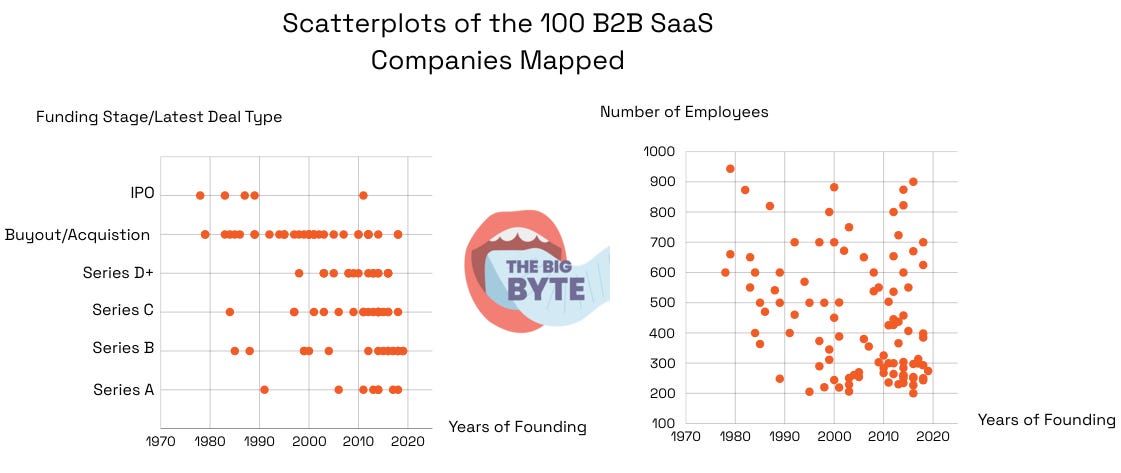
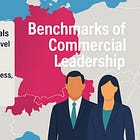
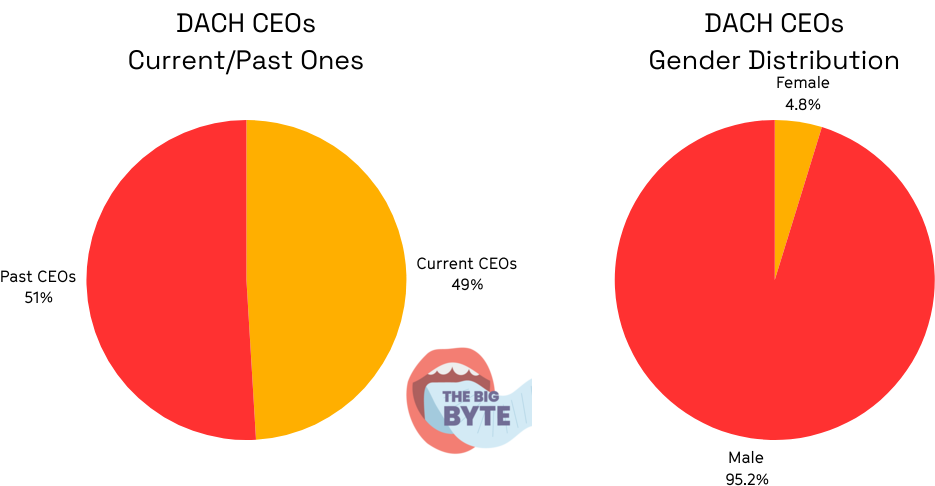
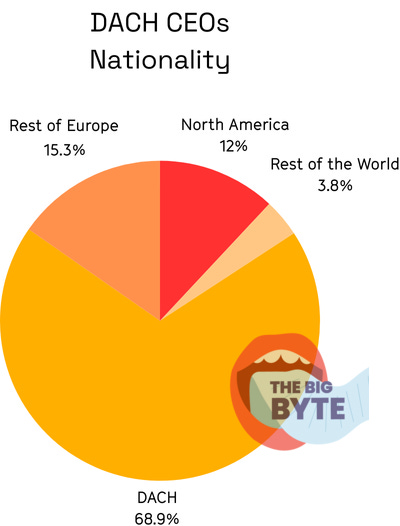
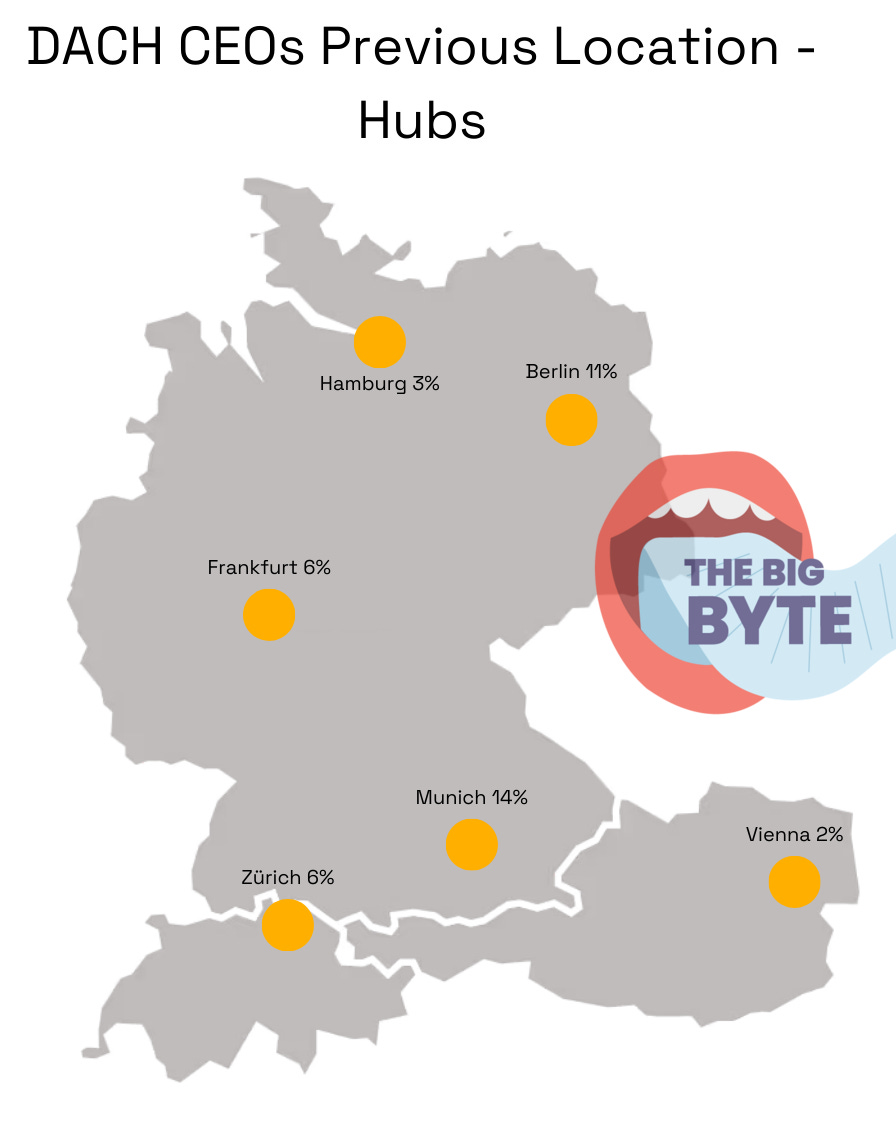

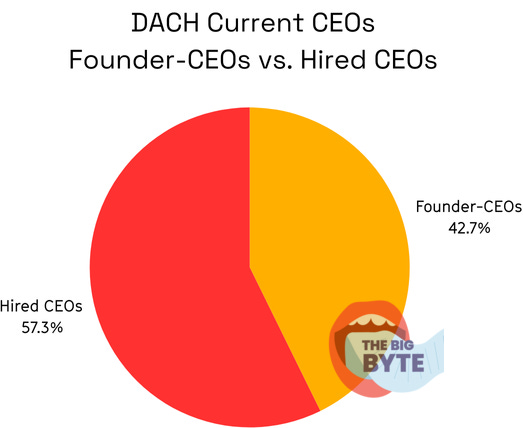
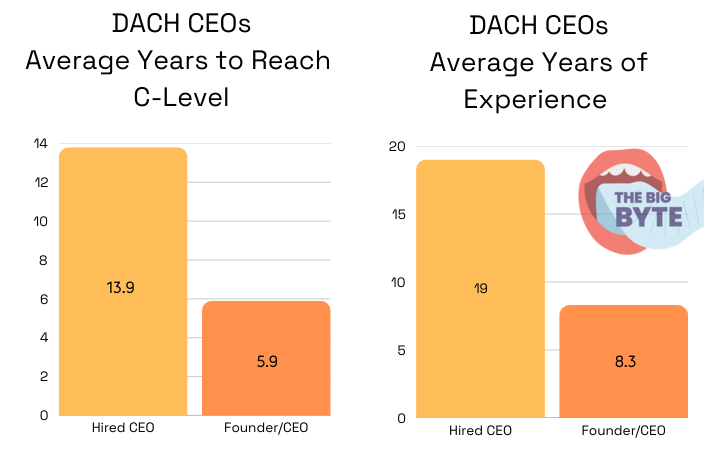

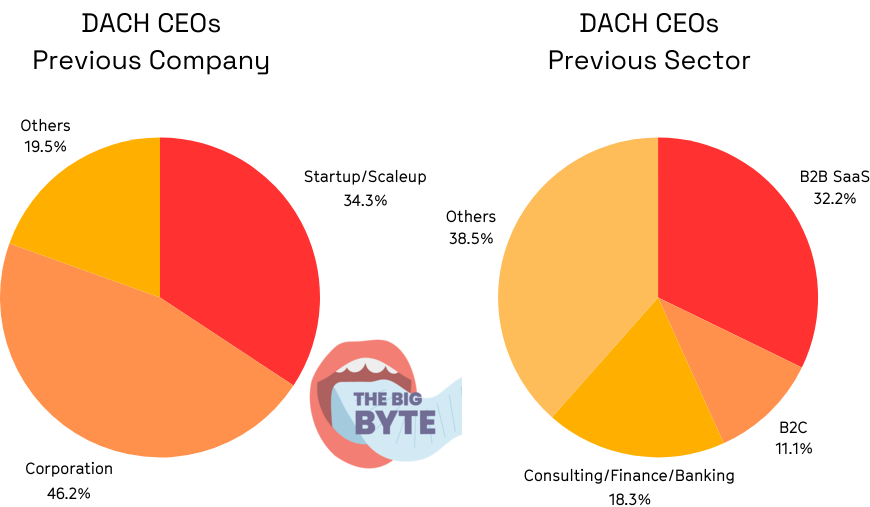
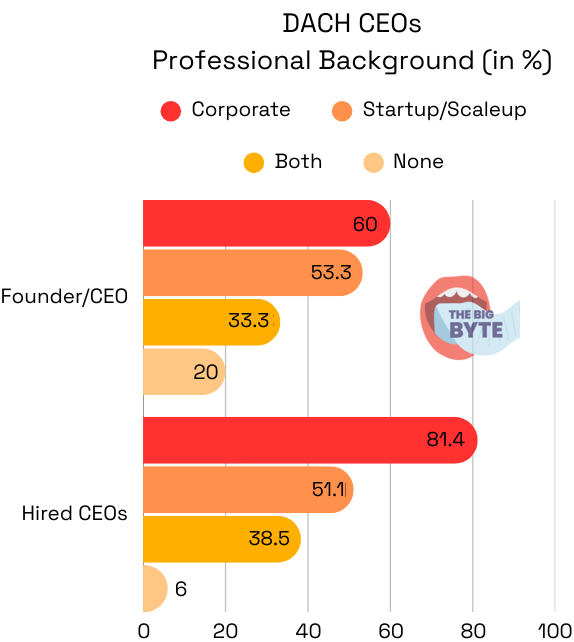
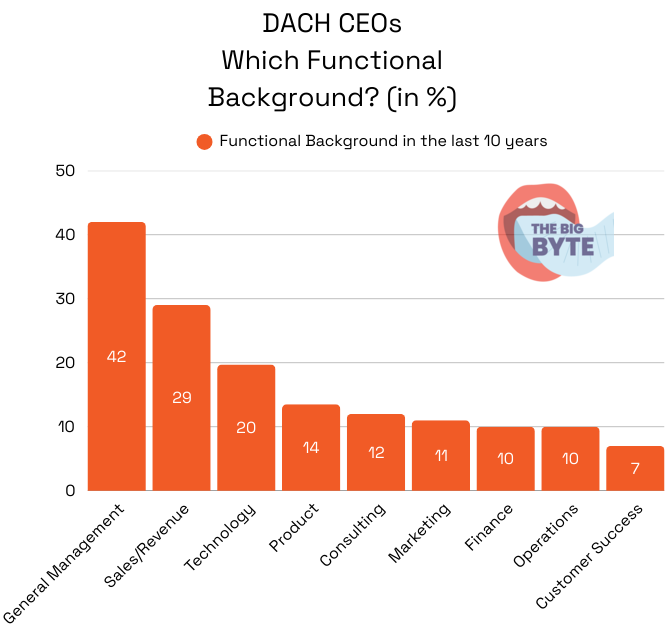

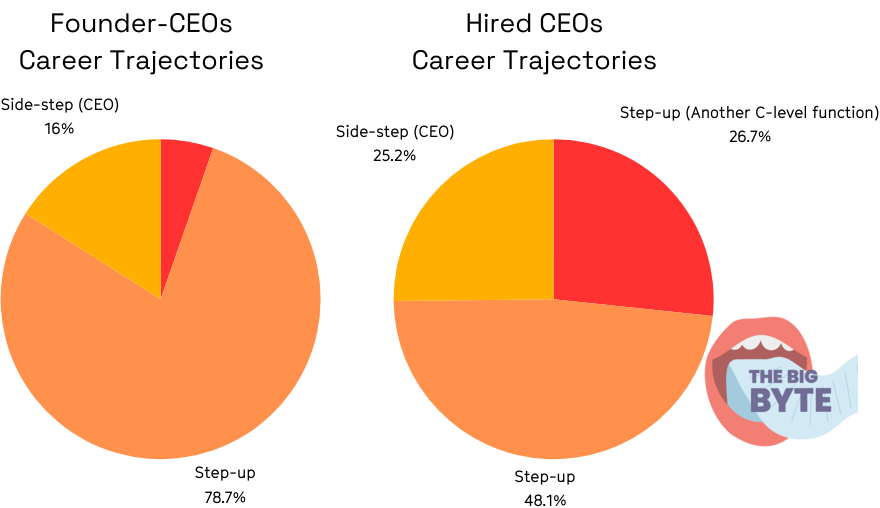
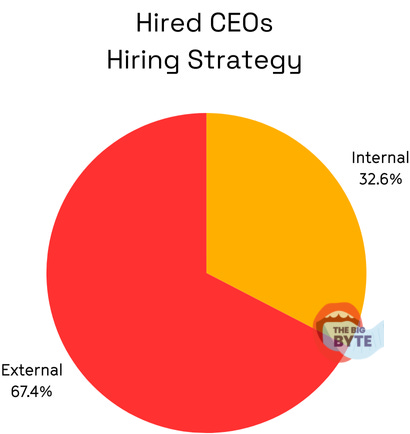
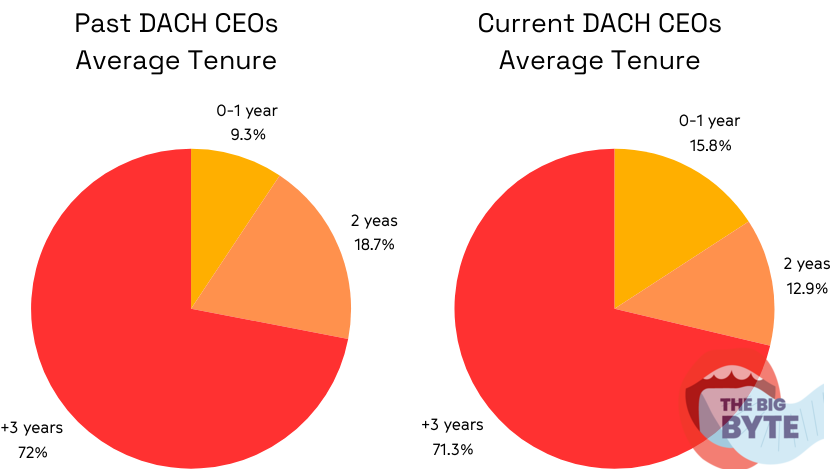
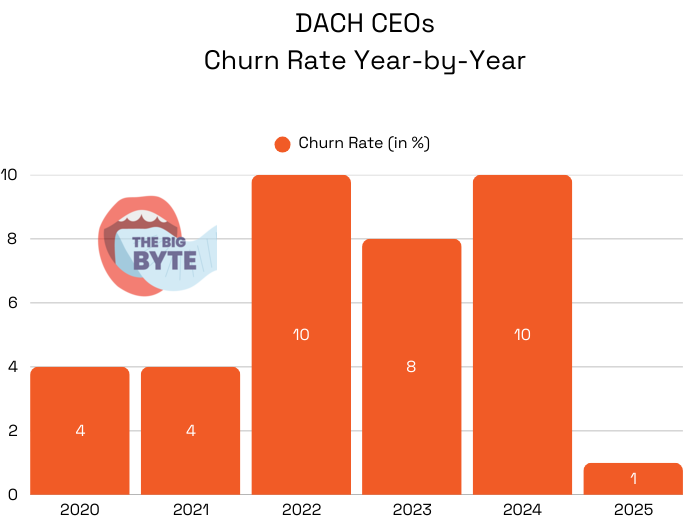
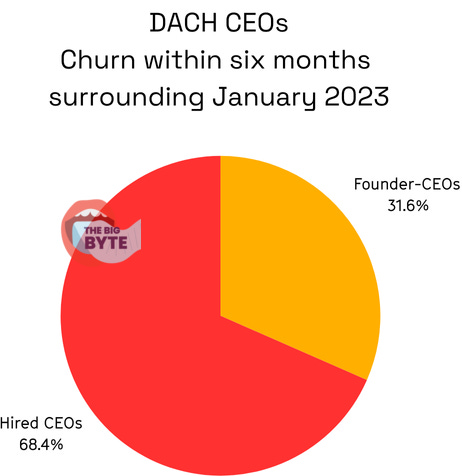

Fascinating insights.
I'd love the data file with over 200 current and past CEOs at 100 DACH B2B SaaS companies.